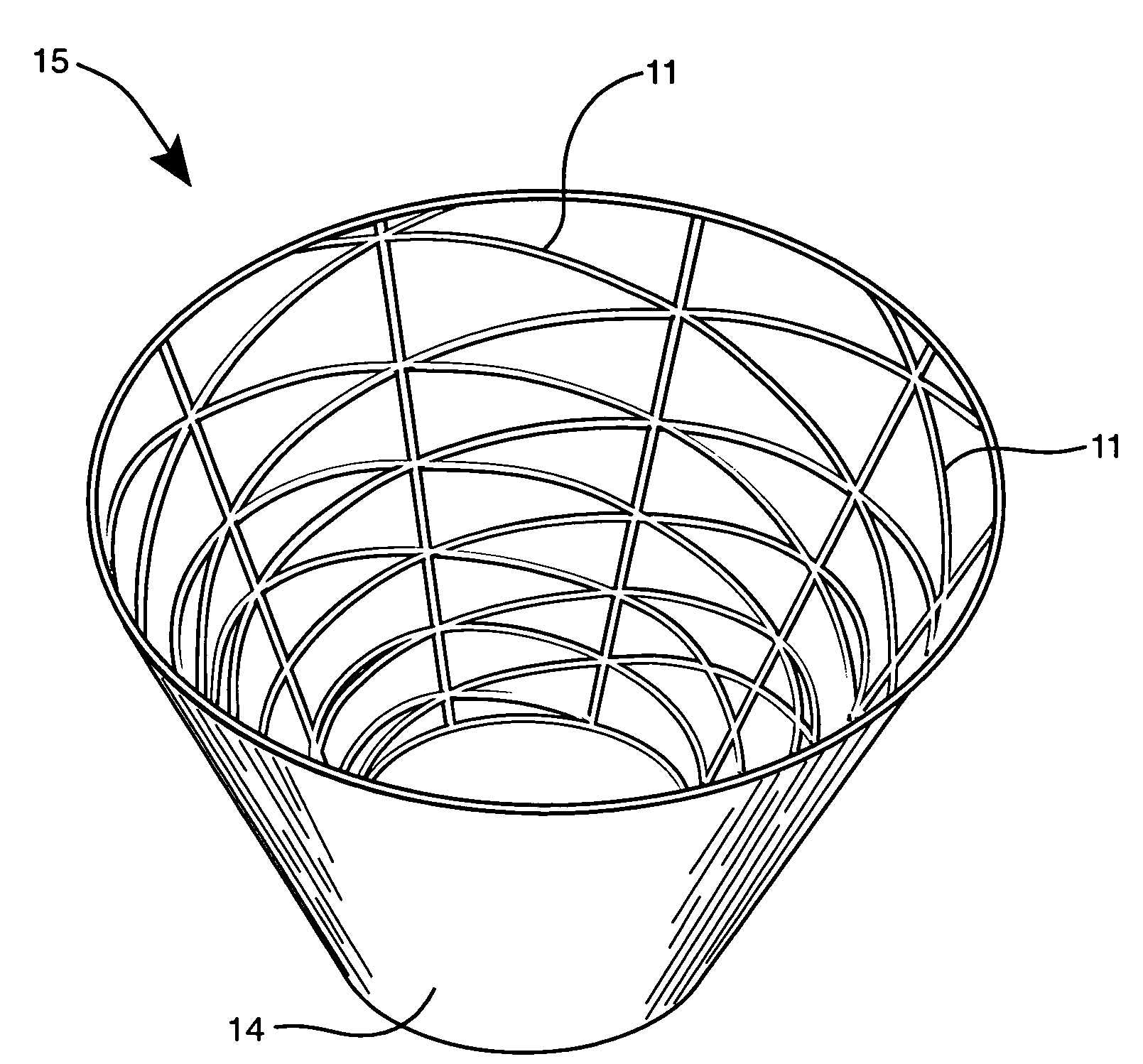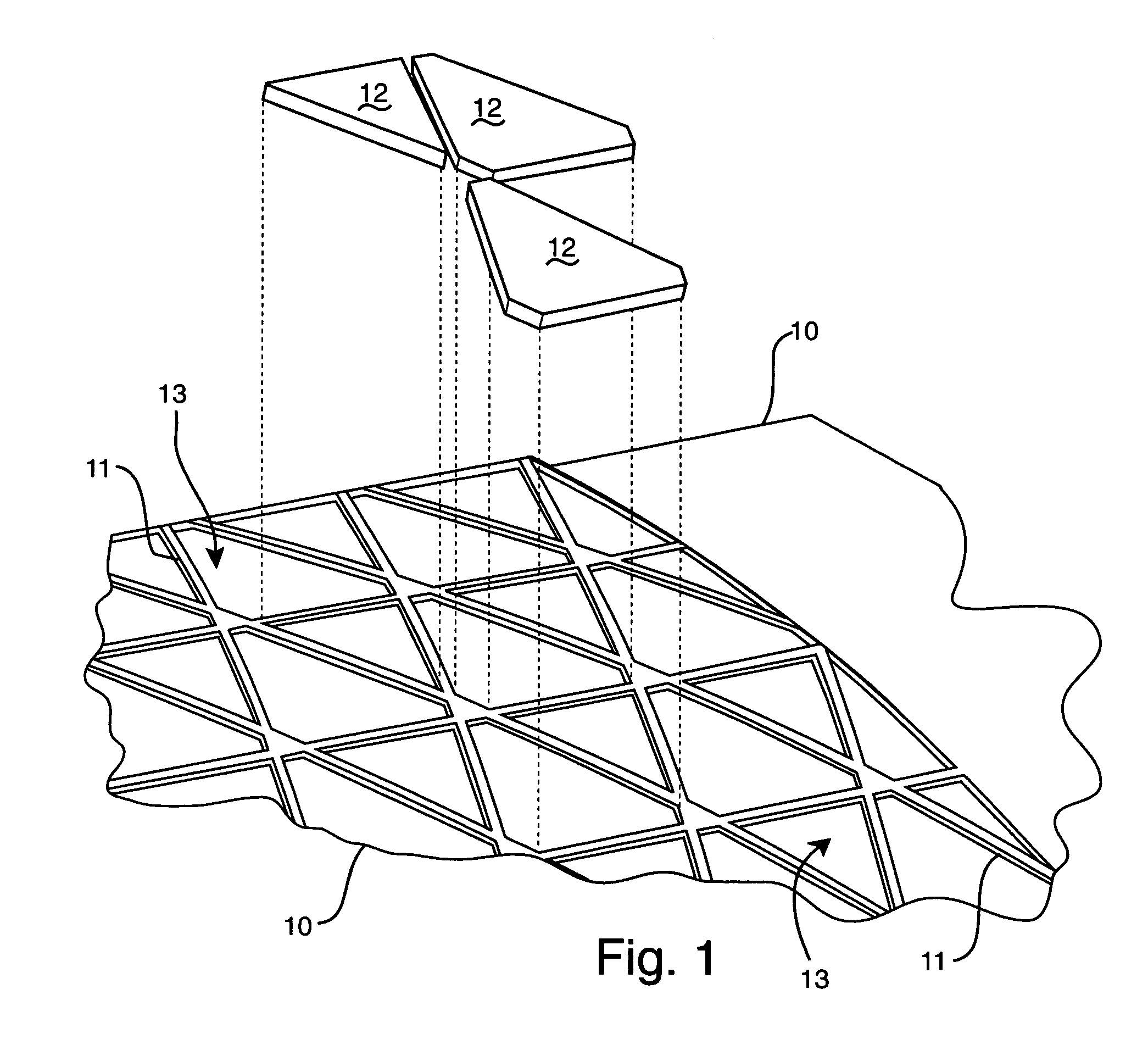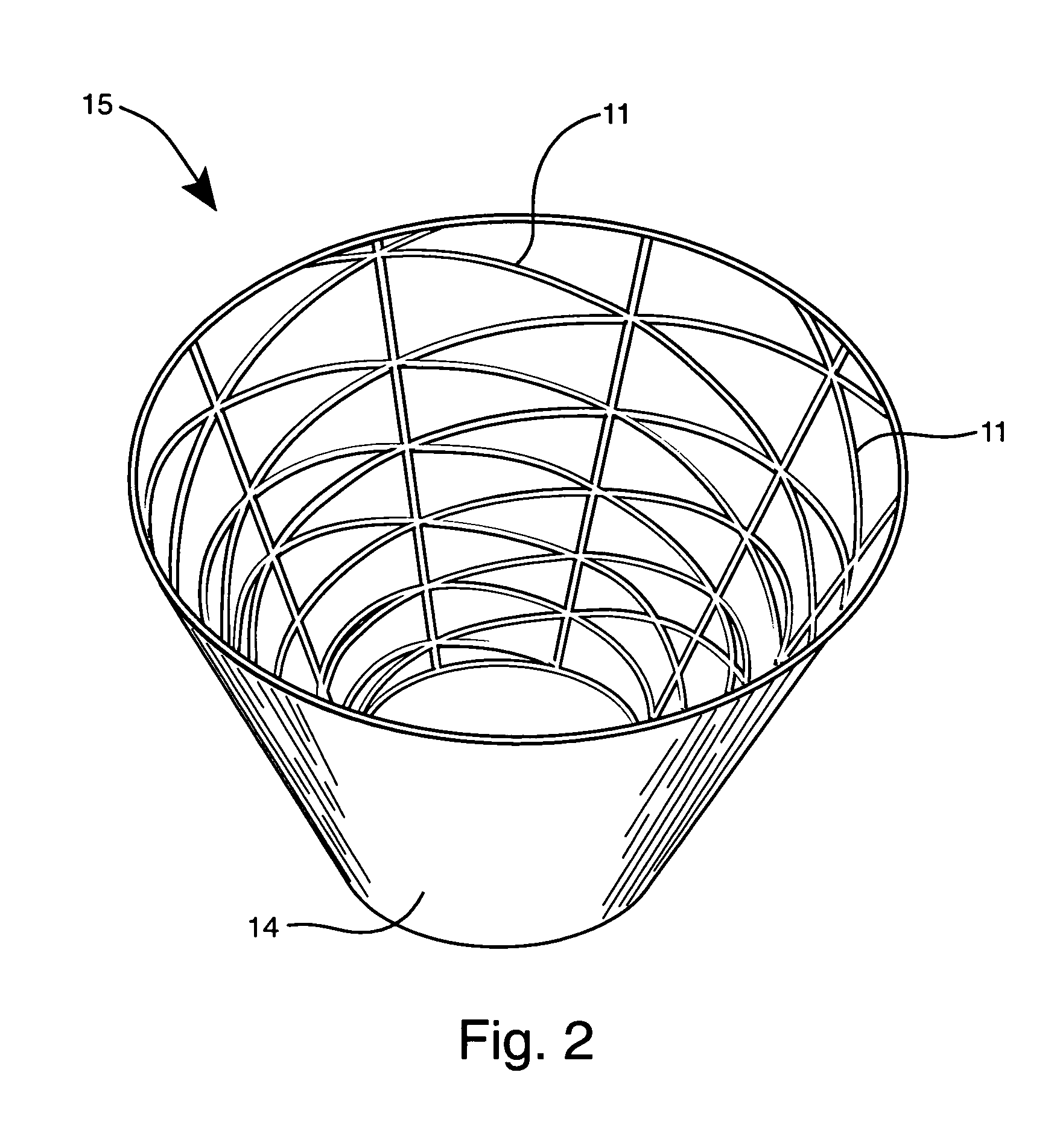Method for fabricating rib-stiffened composite structures
- Summary
- Abstract
- Description
- Claims
- Application Information
AI Technical Summary
Benefits of technology
Problems solved by technology
Method used
Image
Examples
Embodiment Construction
[0019]Hard base tool 10 having the general shape of the desired structure is first fabricated. Base tool 10 has a smooth surface and provides a platform for the ribs to be placed upon. The material selected for base tool 10 must be machinable, thermally stable, and lightweight; for example, particleboard, expansion foam, expansion epoxy, aluminum and graphite.
[0020]Ribs 11 are formed by stacking layers of carbon-fiber tows that have been impregnated with an uncured epoxy matrix material, also known as “tow-preg.” Tow-preg comes in many combinations of fiber and matrix material, and in various sizes such as 12K tow (12,000 fibers per tow), 5K tow (5,000 fibers per tow) and split tape (typically 0.125″ in width and 0.005″ thick). However, many different fibers can be utilized in conjunction with the present invention, such as glass fibers, aramid fibers, or boron fibers. Moreover, these fibers can be combined with a variety of matrix materials, such as polyimides, polyesters, cyanate ...
PUM
| Property | Measurement | Unit |
|---|---|---|
| Temperature | aaaaa | aaaaa |
| Force | aaaaa | aaaaa |
| Magnetic field | aaaaa | aaaaa |
Abstract
Description
Claims
Application Information
 Login to View More
Login to View More - R&D
- Intellectual Property
- Life Sciences
- Materials
- Tech Scout
- Unparalleled Data Quality
- Higher Quality Content
- 60% Fewer Hallucinations
Browse by: Latest US Patents, China's latest patents, Technical Efficacy Thesaurus, Application Domain, Technology Topic, Popular Technical Reports.
© 2025 PatSnap. All rights reserved.Legal|Privacy policy|Modern Slavery Act Transparency Statement|Sitemap|About US| Contact US: help@patsnap.com



